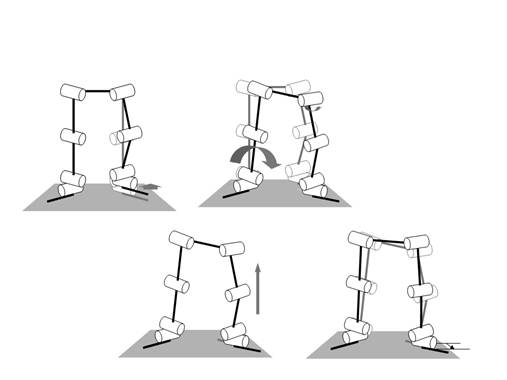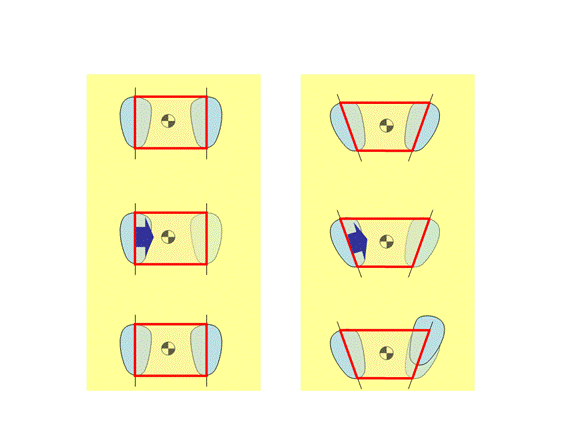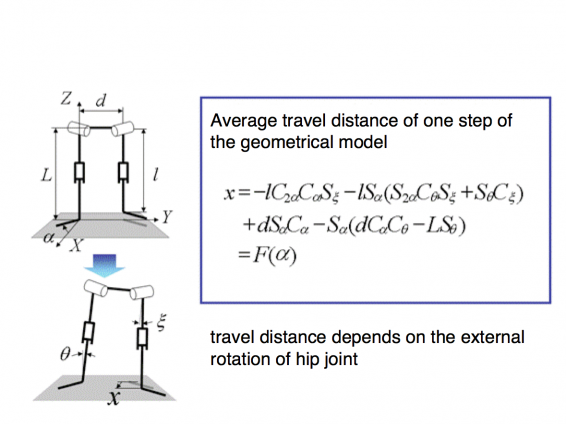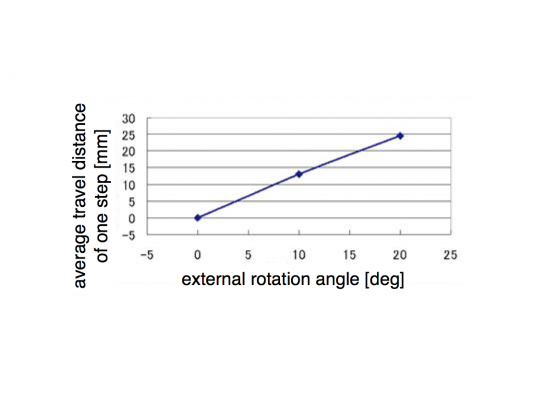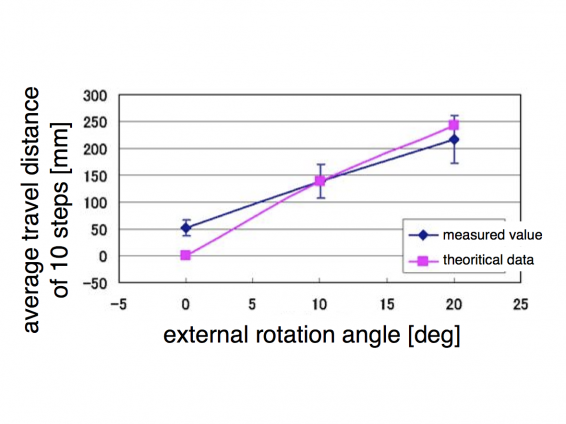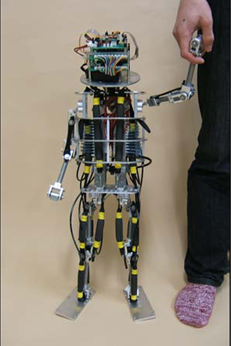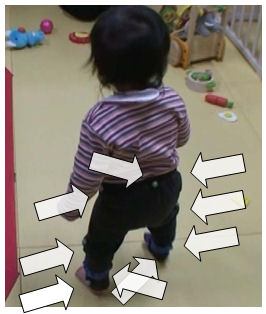Hypothesis about Emergence of Biped Walking based on External Rotation of Hip Joint and the Experimental Verification
We have hypothesized that an external rotation of hip joints, which is a characteristic posture of an infant plays a important role in the development of biped walking. Overview of this idea is shown in Fig.1 and Fig.2.
Fig.1 Emergence of biped walking with an external rotation of hip joints
Fig.2 How an external rotation of hip joints generates forward movement
We have verified the hypothesis both theoretically and experimentally. Fig.4 shows the relationship between the external rotation and forward step length in a geometrical model, which is shown in Fig.3. Fig.5 shows the comparison between the data of the geometrical model and that of the robot with 70cm leg length. We found that experimental data was well coincident with the theoretical data.
We also conducted the same experiment with a new infant-size robot “Pneuborn-13″, which is shown in Fig.6 to verify the proposed model
[hosoda2010].
Fig.3 quantitative evaluation of forward movement
Fig.4 relationship between external rotation of hip joint and forward movement
Fig.5 comparison between theoretical and experimental data
Fig.6 Musculoskeletal infant robot “Pneuborn-13″ Pneuborn 13
We longitudinally observed real infants’ behavior to find the relationship between external rotation and length of stride in their forward movement. Subjects were four infants (2 male and 2 female), who were in the range of 10 to 13 months-old. Nine markers for motion capture system were set to body of a subject as shown in fig.7; two at ankle, one at knee, and three at hip. We measured behavior of each infant for four weeks, in which the infant get to be to able to walk. We found correlation between a hip external rotation and a forward velocity. The significance of the data is under consideration..
Fig.7 Position of markers on infant

